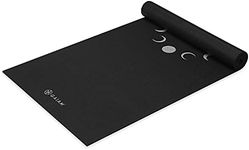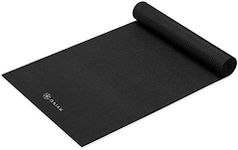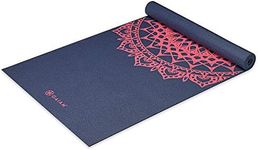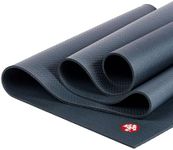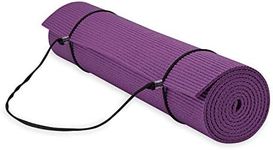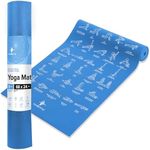Buying Guide for the Best Mats For Yoga
Choosing the right yoga mat is essential for a comfortable and effective practice. The right mat can provide the necessary support, cushioning, and stability, enhancing your overall experience. When selecting a yoga mat, consider factors such as material, thickness, texture, and size. Each of these specifications can significantly impact your practice, so it's important to understand what to look for and how to match these features to your personal needs and preferences.MaterialThe material of a yoga mat affects its durability, texture, and eco-friendliness. Common materials include PVC, rubber, TPE, and natural fibers like jute or cotton. PVC mats are durable and provide good grip but are not eco-friendly. Rubber and TPE mats are more environmentally friendly and offer good cushioning and grip. Natural fiber mats are eco-friendly and provide a unique texture but may not offer as much cushioning. Choose a material based on your preference for durability, grip, and environmental impact.
ThicknessThe thickness of a yoga mat determines the level of cushioning and support it provides. Mats typically range from 1/16 inch (1.5mm) to 1/4 inch (6mm) thick. Thinner mats (1/16 inch) are lightweight and provide a closer connection to the ground, making them ideal for balance and stability. Medium thickness mats (1/8 inch or 3mm) offer a balance of cushioning and stability, suitable for most practices. Thicker mats (1/4 inch) provide extra cushioning, which is beneficial for those with joint issues or who prefer a softer surface. Consider your comfort and the type of yoga you practice when choosing the thickness.
TextureThe texture of a yoga mat affects its grip and how it feels against your skin. Smooth mats provide a softer feel but may become slippery when wet. Textured mats offer better grip, which can be helpful for maintaining poses, especially in hot yoga where you may sweat more. The texture can be natural, like the roughness of jute, or manufactured, like the raised patterns on some PVC mats. Choose a texture that provides the right balance of comfort and grip for your practice.
SizeYoga mats come in various sizes, with the standard size being 68 inches long and 24 inches wide. However, longer and wider mats are available for taller individuals or those who prefer more space. A longer mat (72 inches or more) ensures that your entire body fits on the mat during poses, while a wider mat (26 inches or more) provides extra room for movement. Consider your height and the space you need for your practice when selecting the size of your mat.
PortabilityPortability is an important factor if you plan to carry your mat to and from classes or travel with it. Lightweight mats are easier to transport but may offer less cushioning. Heavier mats provide more support but can be cumbersome to carry. Some mats come with carrying straps or bags, which can make transportation easier. Consider how often you will need to move your mat and choose one that balances weight and convenience.
DurabilityDurability refers to how well a yoga mat holds up over time with regular use. Mats made from high-quality materials like natural rubber or high-density PVC tend to be more durable. Durability is important if you practice frequently or engage in vigorous styles of yoga. A durable mat will maintain its shape, cushioning, and grip longer, providing better value over time. Consider how often you practice and the intensity of your sessions when evaluating the durability of a mat.
